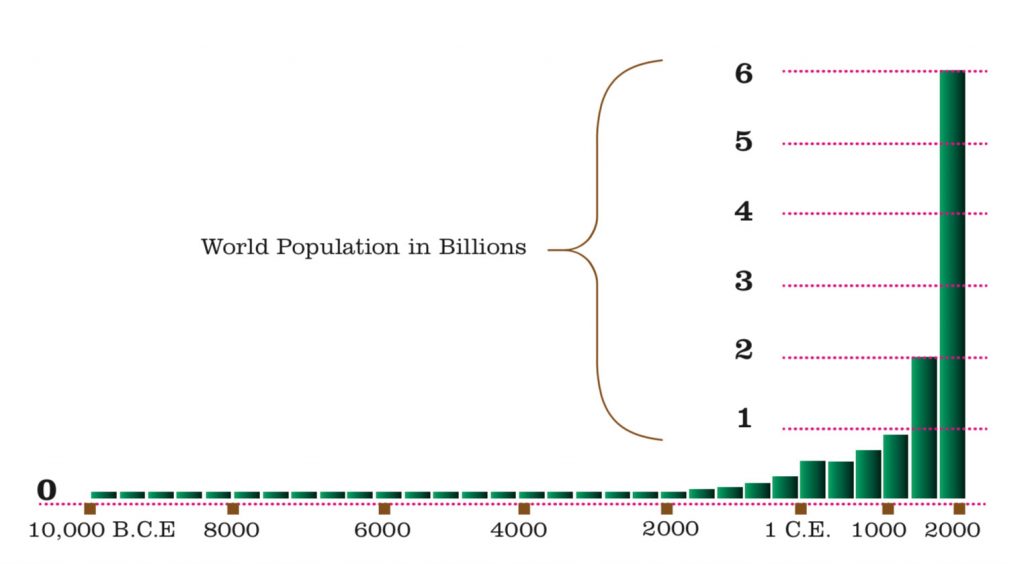We are headed for a fall as a species, and it seems that all we can do is watch. Some say our imaginations are not big enough to take in the full scope of the catastrophe—the extinction of up to one half of Earth’s plant and animal species by century’s end. Others claim that we can’t help ourselves. We’re sick, addicted to everything from petroleum products to that ubiquitous soporific we call “media.” They’re killing us. Still, we remain stuck to them like glue. Of the two explanations, addiction seems more apt. Our imaginations are better than ever. They tell us that we can invent our way out of this problem, that by digging the hole of human progress just a little deeper, somehow we will come out on top.
Humanity is drunk, blind drunk, and even now is in the process of spending all the money and burning down the house. It blacks out after its worst excesses and can’t remember a thing. Faced with the wreckage in the morning, it will sometimes admit to itself “I did this” and feel some remorse. What follows, invariably, is a feeling of shame and the desire to compensate in some way. But that only adds more human culture to the mix, which in turn further feeds our addiction. We write books or make movies; build faster computers or better phones; try to cure cancer, hunger, or poverty; and hold summits of various kinds—anything to deny the certain knowledge that lies like a dead weight at the bottom of everything we say or think or do: This addiction is going to kill us in the end.
Why is that? It is easy nowadays to blame the demon oil. But oil is not the problem and never has been. A defect of character underlies our common addiction, a defect that throughout history has always masqueraded its symptoms as solutions—agriculture, mass production, petroleum, consumer-based economies, it hardly matters which. And what is the underlying character defect shared by modern human beings as a whole? It is the belief in a destiny apart from Nature— a veering off the path established by our ancestors on the long green road through time.
In the beginning the departure was not a great one—or at least not in terms of environmental impact. To understand why this is so, we have only to type the words “population curve” into Google Images and click on the first item that pops up—a Wikipedia graph charting the growth of the species Homo sapiens over a very small but decisive portion of its extremely long history—the period from the dawn of agriculture down to the present day. It’s like watching the slow burn of a long fuse as it inches toward the bomb.
For 10,000 years the line hugs the bottom of the graph, indicating a world population still measured in the lower millions. Then, about the time of Shakyamuni, it suddenly doubles to 100 million. Over the thousand years that follow, it doubles again, and then again, rising steadily from there until the time of the industrial revolution, at which point it tops a billion. Then it goes straight up.
Few people expect to be shown a graph like this when they show up to learn Buddhist meditation, but I have found that it is incomparably the best place to start. If we want to follow the way of the bodhisattva, first we have to be able to find it. If there is a better, more honest place to begin looking for a way to save all beings, I’d like to know where it is. The path we are on now as a species is not the path of the Green Bodhisattva—or, for that matter, any kind of bodhisattva. View it upright, and it’s headed off the charts. Lie it flat and lengthwise (like a path you might be tempted to walk down), and it’s headed anywhere but forward through deep time. Something like that must have been at the back of White House “science czar” John Holdren’s mind last year when he introduced an ominous metaphor to describe the future of our species. I can imagine him looking at some version of the Wikipedia graph, along with the statistics on greenhouse gas emissions, and suddenly realizing that he wasn’t looking at a growth curve at all, but at a deranged and profoundly upsetting map. “We’re driving in a car with bad brakes in a fog and headed for a cliff,” he told reporters, in words that came out sounding more like a revelation than a political calculation. “We know for sure that cliff is out there. We just don’t know exactly where it is.”
For the Green Bodhisattva, it doesn’t matter where the cliff is—how close or how far. All that matters are two urgent questions: How did we end up on a road leading to a cliff? And how fast can we get off it and back to the path we came on, the one traveled by our ancestors of old? To question the fog, the brakes, or the speed we are going is quite pointless, when the very road we are traveling on lies at a hard right angle to Nature. Where do we think we are going? To ask that question is to become a Green Bodhisattva. To answer it is to become a buddha.
Thank you for subscribing to Tricycle! As a nonprofit, we depend on readers like you to keep Buddhist teachings and practices widely available.
